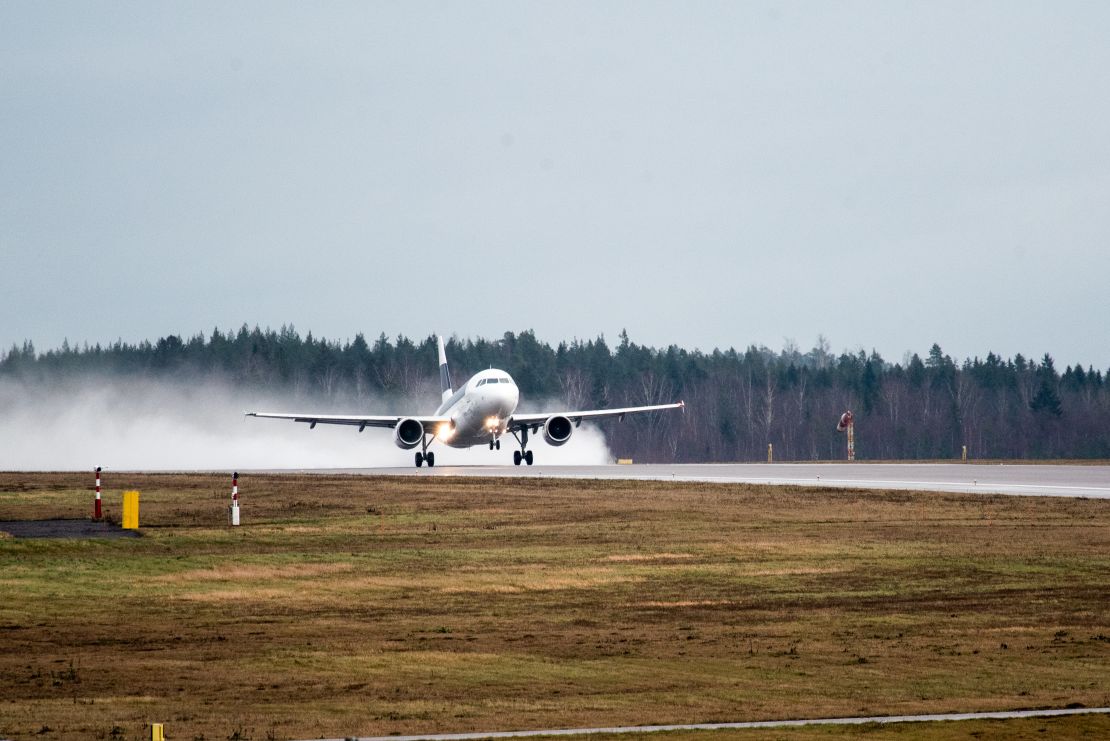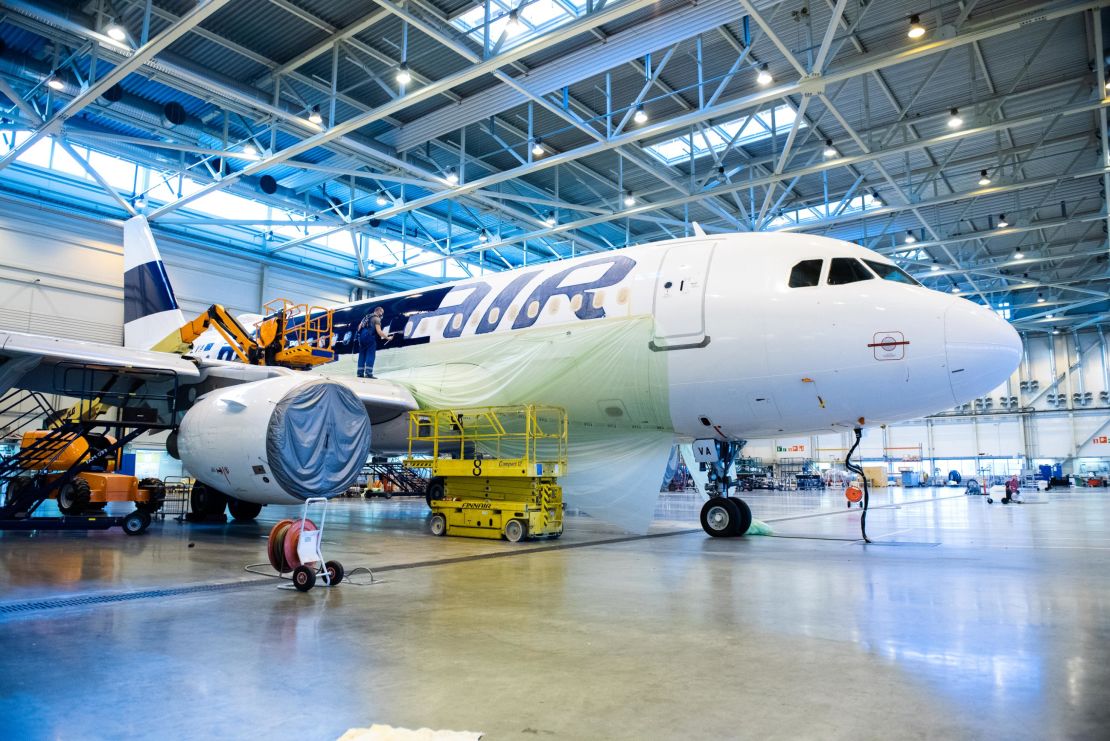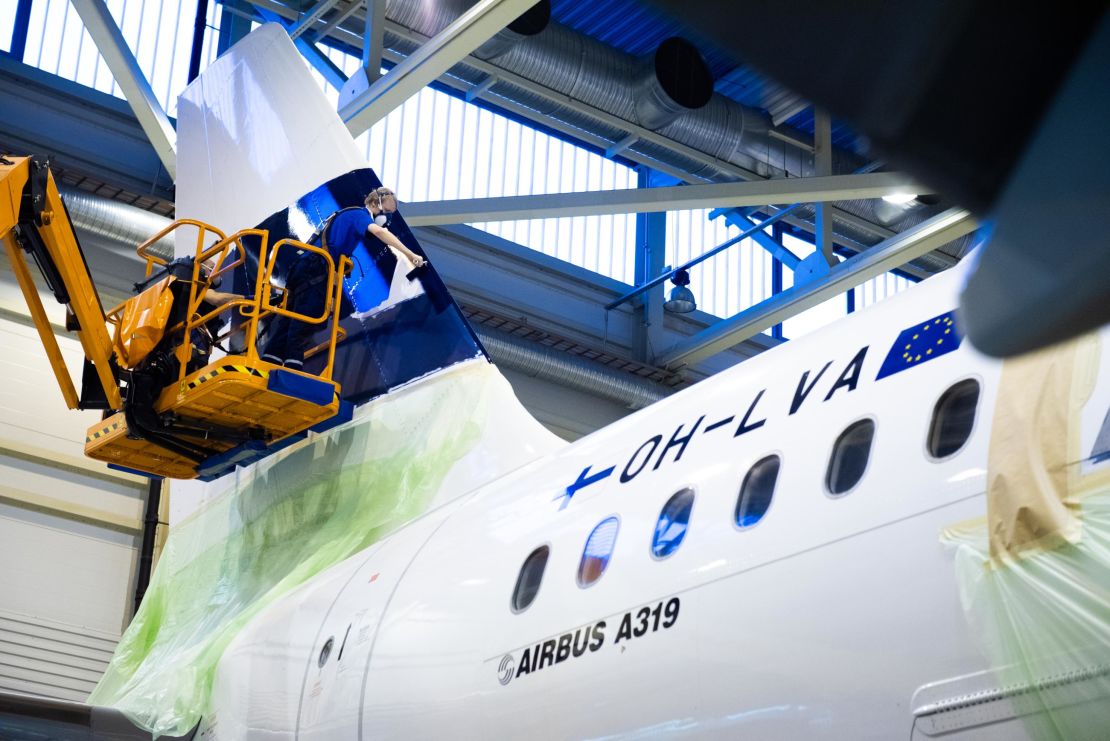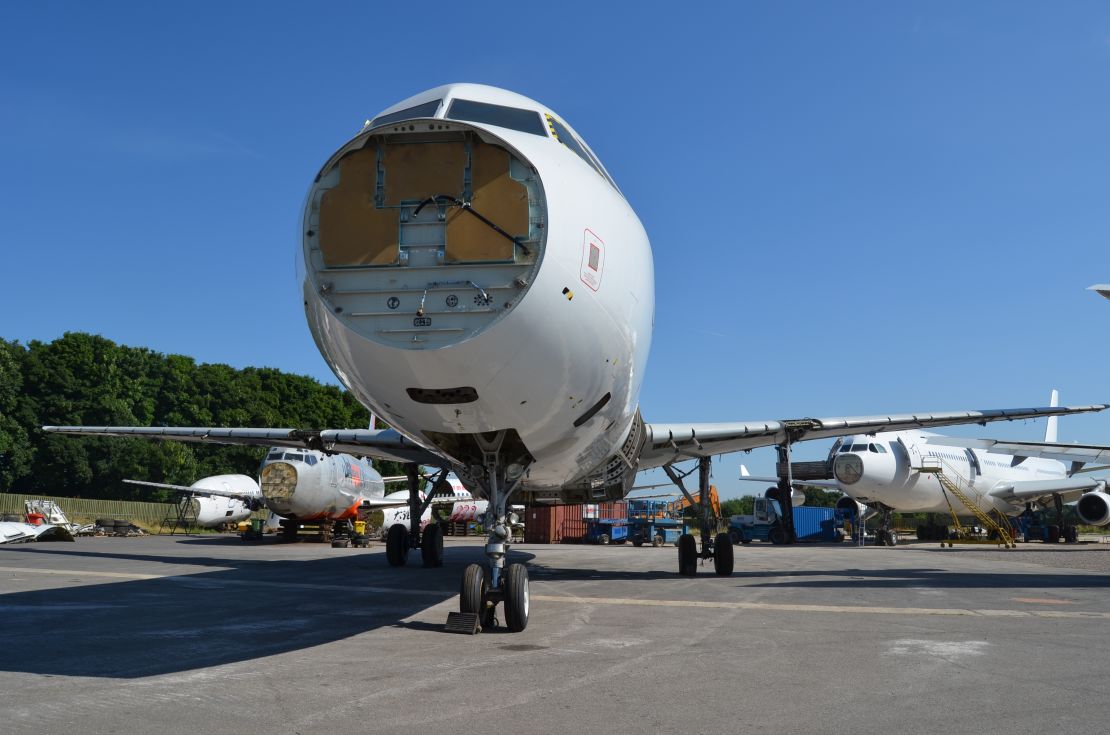Deciding when and how to retire an aircraft is a complicated job for airlines, even in normal times. With Covid-19, the world’s fleet has been largely grounded. Many aircraft that might have flown for five, 10 or even more years are being sent to have their valuable parts and systems stripped, and their metals and other materials recycled.
Finnair is starting to retire its Airbus A319 airplanes?– small, two-engined jets that it has spent more than two decades flying around Europe to connect to and through its Helsinki hub. Director of Fleet Management Miika Haatio sat down with CNN to explain how it works.
Every individual aircraft has a natural life, Haatio explains: “Each aircraft, and especially the airframe, has a design service goal. In this case, Airbus has designed the airframe for a certain amount of flights, and done all the testing for the structural integrity for that number of flights.”
Some airlines do keep aircraft flying longer, however, for a variety of reasons.
These might include not having a direct replacement newer aircraft, like for the Boeing 767-300ER, a relatively small long-distance, two-engined, widebody plane that many airlines were still operating before Covid-19. Some planes have been put on longer routes, so they have flown proportionally fewer flights. And sometimes it just makes financial sense, even outside a pandemic.

Calling time on an airplane
As we talk to Haatio just after noon on a cold Helsinki December day –?the sun rises at 9:20 a.m. and sets at 3:11 p.m. –?there are only nine Finnair flights in the skies of the world: an Airbus A321 heading to Malaga, Spain; an E190 regional jet to Berlin; two ATR turboprops to Oslo, Norway, and Gothenburg, Sweden; and widebody jets inbound from Bangkok, Tokyo, Seoul, Beijing and Shanghai.
Meanwhile, 1,194 miles away, on a quiet airfield in rainy Gloucestershire, a couple of hours west of Heathrow in the English countryside, Finnair’s first A319, registered OH-LVA, sits waiting to be recycled.
The Airfleets database shows that LVA’s first flight was August 25, 1999, and was delivered to Finnair on September 20 that same year. The airline reports that, in its over 21 years of service, LVA performed 32,710 flights across 55,367 hours. If all of the 144 seats on board had been filled on every flight, that would be some 4.7 million passengers transported over its lifetime.
In general, some airlines might prefer from a point of financial principle to spend money maintaining older airplanes such as the LVA rather than buying new ones, although the counterbalance for this is the impressive fuel efficiency gains of newer aircraft. That’s why some planes will fetch quite a sum on the second-hand market.
For LVA, however, the writing was on the wall: Airbus’ A319 is a smaller version of its A320 aircraft, and a “shrink” aircraft often loses some of the efficiency of its larger sibling.
“In the Finnair operation,” Haatio says, “larger aircraft obviously are more efficient and have less fuel burn per passenger than smaller aircraft. We see a shift towards larger narrowbodies other than the smaller ones. That can be seen also, for example, in the Airbus order books for new aircraft: the larger ones are more preferred than the smaller ones.”
Indeed, Airbus’ most recent orderbook data show that only 84 A319neos have been ordered, in comparison with 3,925 of the larger A320neos and of the 3,446 even bigger A321neos.

Salvaging a few parts
So would LVA have been retired this early if the Covid-19 pandemic hadn’t happened?
“We can speculate,” Haatio says. “Technically, this aircraft could have been flown a bit more, but obviously, due to Covid, there’s a huge surplus of aircraft in the world, at least in the short term, and prices have gone down quite a bit.
“Potentially it could have gone to some other operator for a further life, but in this market situation, there were basically no takers for it. So nobody’s – we could say that very few airlines or operators – are buying an aircraft at the moment, because everybody has too many for the short term.”
And so Finnair appointed AerFin, a company headquartered in Cardiff, Wales, that specializes in end-of-life aircraft, to disassemble LVA, sell the various parts of the aircraft that still have value –?and to return the landing gear to Finnair.
“For this particular aircraft, the landing gears are quite new, or newly overhauled,” Haatio says. “So we decided that we want these landing gears back. Once they’re removed off of the aircraft, they go through Safran for recertification then come back to Finnair and we reuse them on our remaining fleet.”
The actual dismantling and recycling process can take place in several different airports. For LVA, it’s Cotswold Airport in Kemble, in western England.

So long to the livery
Before departing Helsinki, Finnair removed quite a lot of the aircraft’s interior: for example, the cabin curtains can be reused on other aircraft, as can the leather and seat covers –?although the seat structures themselves flew off with the plane, for AerFin to try to sell on to other airlines.
The requirements for oxygen bottles and fire extinguishers in the cabin, meanwhile, are based on the number of passengers, and with zero on board these were also taken off in Helsinki.
So, too, were the ovens and coffee makers, so any retiring aircraft’s final pilots had better bring a flask onboard with them.
One of the final jobs before an aircraft takes its last flight to storage or recycling is usually to paint over the airline’s logo, symbols and other branding, known as its livery.
Essentially, airlines like other companies want to control how their brand is used, and once the aircraft is in the hands of the recyclers or being sold on, they’re no longer in control. And nobody wants pictures of their brand being crunched by a piece of heavy machinery during recycling.
Unusually, in LVA’s case, Finnair chose its signature blue rather than the usual white,?not for any symbolic reason, but because it had extra blue paint that needed to be used up rather than ordering new white, and thus her unusual stripes on the body and tail of the plane.

Everything (well, almost everything) out, please …
After arriving at its disassembly location at Cotswold Airport near Kemble in western England, AerFin (in this case, in collaboration with Air Salvage International) started splitting out the aircraft components into various categories.
AerFin Operations Director Simon Bayliss explains that, first, anything to be returned to the airline is removed, like LVA’s landing gear, as well as anything to be sold on. That would normally include avionics: systems like those used for communications, collision avoidance, weather, and other flight deck equipment.
“Then,” Bayliss says, “we’ve got what we call the major assets and the structures. That’s things like the auxiliary power unit, the landing gear, the thrust reversers and nacelles. There’s what we call the flight control, that’s basically the flaps and the rudders. Then we’ve got the interiors: everything from the seats, the cabin equipment, the coffee, the tea makers, the toilets, the galleys. Once that’s done, then you’re left with basically the fuselage.”
From there, the flight deck might be cut out to be reused as a simulator, while the doors might also be removed for cabin crew training units.
Everything else is split into four categories of recyclable materials or waste. First is metal (whether that’s steel, stainless steel, titanium, aluminum or something else). Then there are recyclables such as flight deck glass, tires and so on, then hazardous components such as fire extinguishers and batteries, then composite materials such as the interiors and seats.
And that’s the end of LVA’s story: useful systems and parts removed continuing to serve passengers, the rest being extracted for onward sale, and her materials recycled to be used again in something else – perhaps, even, a new airplane that eventually might take to the skies once more.
